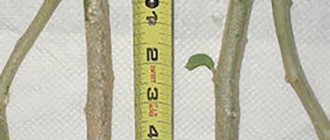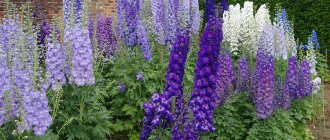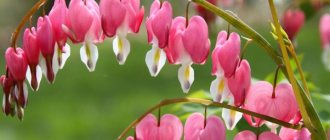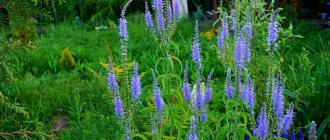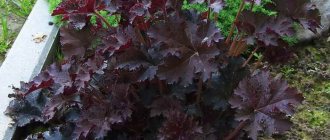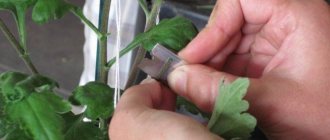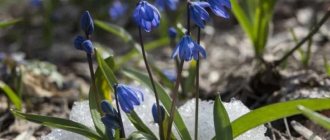The favorite flower of baboons is found not only in the vast expanses of hot Africa, but also in temperate regions. Amateur flower growers are increasingly choosing tropical species to decorate their cottages and gardens. Breeders have developed several interesting hybrid varieties and added to the range of shades and bright colors of new varieties.
How is a flower like Babiana grown? Planting and care in open ground, methods of propagation, preparing bulbs, planting on a plot, pest control, methods of placing on a plot - useful information for everyone who grows exotic flowers.
Types and varieties of Babiana for open ground
Where does the bulbous plant get such a strange name? This question is often asked by flower growers who come across information about an exotic plant for the first time. It turns out that baboon tubers are very fond of baboons: this genus of monkeys actively consumes bulbs of a tropical species. Tubers are included in the diet of not only the animals of South Africa, but also the inhabitants of the Bushmen tribe living in the tropics.
General information about Babian:
- Iris family;
- low-growing plant: height of peduncles – from 15 to 25 cm;
- bulbous perennial;
- the leaves often have a slight edge;
- there are up to five leaves on the stem;
- the buds are in many ways similar to gladioli, but smaller and not as lush;
- inflorescences emit a delicate and bright aroma;
- shades of petals: purple, lilac, blue, white, there are types with multi-color elements;
- the babian plant blooms for four to five weeks;
- the seeds, after ripening, are located in a round fruit;
- with good care and proper preparation of the bulbs, a flower from the Iris family develops well in temperate latitudes;
- The main method of propagation is by bulbs: cultivation from seeds is carried out, in most cases, during breeding work.
Varieties of Babiana:
- Blue-red. An exotic variety, the petals change color from blue (at the beginning of flowering) to rich red (closer to the fading of the buds).
- Folded. The shape of the flowers resembles peaks, the stem is about 20 cm high, the petals are bright purple or white. A characteristic feature is the original aroma of cloves.
- Straight. The tropical species is in many ways reminiscent of gladioli, but the height of the plant is smaller: up to 25 cm. The shade of the petals is pink or white, often there are small dots on the surface.
- Sticking out. Many gardeners compare the original type of babiana with freesia.
- New Hybrid. The result of selection work. The hybrid has spectacular buds and long sword-like leaves. The shade of the leaf blades is bluish, there is an edge.
Reviews
Most flower growers and designers leave their reviews about the plant. They claim that the flower has a truly attractive appearance and can decorate any flower bed. Thanks to the variety of colors of babiana, it is possible to combine them. Flower growers in their reviews claim that the plant is unpretentious in care. That is why anyone can grow it.
Babiana is a very beautiful bulbous flower, which is characterized by ease of cultivation and care. That is why it is quite interesting for a large number of gardeners.
Growing from seeds to seedlings
The method is less common than planting bulbs. Seeds for propagation of plants native to southern countries are rarely used; it is easier to grow Babiana from bulbs.
Soil and container
The soil should be light and nutritious. It is important that the substrate for babiana is moisture-permeable, absorbs and releases moisture well. Do not use acidic, heavy soil. It is useful to add a little peat, sand and perlite to the soil to increase the looseness and nutritional value of the substrate. The soil in the box for growing seedlings and on the plot should be approximately the same composition.
A general container is suitable for growing tropical species. The grown seedlings are planted in separate containers.
Seed preparation
Unlike some species, small babian seeds should not be immediately placed in the ground: germination will be below average. The best option is to stratify the planting material.
How to proceed:
- First, the seeds are placed in damp gauze, wrapped, then put in a cool place, with a temperature of no more than +8 degrees, for example, on the bottom shelf in the refrigerator, in a compartment for storing vegetables.
- It is important that light does not penetrate into the “cocoon”.
- During the stratification period, the material is periodically moistened and the condition of the planting material is checked.
- After 4 weeks, hardened seeds are taken out, dried, and planted in the substrate.
- It is useful to soak in a growth stimulator: use the drugs Epin, Kornevin.
Seedling care
Babiana seedlings should be in a warm place with good lighting.
High humidity is useful, but you should not flood the soil with planted “seeds”. Note! It takes quite a long time for seeds to germinate. It is no coincidence that seedlings of the southern flower are planted in the month of March, so that at the end of May the seedlings can be planted in the ground. Late movement of seedlings can lead to unpleasant consequences: the plants will not have time to grow stronger and stretch sufficiently, the bulbs will be small and unsuitable for storage, with a deficiency of nutrients.
Transplanting
Important points:
- wait until the soil and air warm up well;
- observe the interval between sprouts;
- do not wait until the seedlings “outgrow” the optimal time - early May, with slight adjustments to local conditions;
- if it is still cool in May-June, then you should give up growing southern plants and choose a less capricious species, for example, Mallow or Gaillardia.
Reproduction
Babians can be propagated by seeds (a rather labor-intensive method) or by dividing the bulbs.
When to sow babiana seeds? Sowing is carried out indoors in pots in winter or early spring.
How to sow? The seeds are sown without pre-treatment in a mineral substrate such as perlite or mineral cat litter.
Use a well-sanitized plastic pot. Do not cover small babian seeds with soil, but only large ones with a thickness of substrate equal to the thickness of the seeds. Sprinkle water containing a few drops of fertilizer to saturate the entire substrate and place the pot in the bag. Place the pot in a warm place, in partial shade, at a temperature of 23 to 28 °C during the day and 20 to 22 °C at night.
Much more often, babians are propagated by bulbs. The plant produces young baby bulbs. They are carefully separated from the mother bulb and planted separately.
Planting bulbs in open ground
The optimal method for growing the southern species. “Baboon Flower” takes root well in the middle zone, but the tubers must be dug up in the fall, otherwise the heat-loving plant will die during frosts.
Deadlines
It is impossible to determine the exact time for planting the bulbs: it is important to take into account the conditions in a particular region. The approximate period is mid-May or the third or fourth decade of the last spring month: by this time, even in areas with a temperate climate, it is warm and there are no recurrent frosts. It is important that the temperature does not drop below +20 degrees for several days.
Choice of location and lighting
The southern plant does not like areas where there is a lot of shade. Lowlands and areas where strong winds blow are not suitable for planting babiana.
Other recommendations when choosing the optimal site:
- a sunny place is suitable;
- the soil should not be heavy and very acidic;
- swampiness is the enemy of many plants from hot countries, babiana is no exception;
- in open areas and quiet corners the flower grows well if there are no drafts.
Tuber preparation
When purchasing planting material in a specialized store, no additional processing of the bulbs is required: after digging, the base was kept in the right conditions. If an amateur gardener wants to grow a baboon’s favorite flower from planting material collected independently, he will have to prepare the bulbs, otherwise the flowers may not germinate or the buds will not be released.
How to proceed:
- at the beginning of autumn, after the buds fall, the tubers are dug up from the plot and transferred to the home for storage;
- It is important to dig up the bulbs carefully to maintain the integrity of the base. If a large tuber is damaged, then this unit is not suitable for storage: rotting is highly likely;
- to overwinter the bulbs you will need a cool place without access to light;
- it is convenient to store planting material in peat or paper bags;
- Despite the low temperature (from +8 to +10 degrees), excess humidity and air stagnation should not be allowed. It is important that the cellar is periodically ventilated. You can arrange storage for babiana bulbs on the balcony, in a box, but the container must be insulated with polystyrene foam and holes must be created for ventilation. The temperature regime must not be violated. At lower rates, the tubers freeze out; at high rates, early germination of roots and leaves begins, which is not required during a certain period;
- The bulbs are planted in the spring, when the air temperature reaches +22 degrees and above. If the grower observes the time of planting the tubers, then the babiana grows well and produces multiple buds;
- it is important that the soil is also well warmed up: the tropical species does not tolerate cold well.
Landing rules
How to proceed:
- the bulbs are planted in prepared soil: the soil is loosened, watered with a solution of potassium permanganate (medium strength) to protect against fungus;
- For each bulb, prepare a hole of medium depth: from 5 to 7 cm. Be sure to maintain an interval between neighboring plants: from 10 to 12 cm;
- Babiana tubers are planted on a warm day, when there are light clouds in the sky, there is no strong wind and, especially, rain;
- the bulbs are buried in the ground, sprinkled with earth, and watered moderately;
- If you follow the recommendations, the “baboon delicacy” takes root well.
If there is not enough light in the garden due to overgrown fruit trees, then it is better to refuse to plant a southern plant, which prefers open, sunny areas. There are flowers for open ground that are more adapted to the shade: Anemone, Lily of the Valley, Foxglove, Nemesia, Dicentra, Geranium, Astilbe, Fern, Mirabilis, Lobularia, Nasturtium.
Description of the plant
Babiana is a genus of perennial bulbous plants belonging to the Iris family (Iridaceae). It includes about 80 plant species native to the extreme south of the African continent.
Members of the genus Babiana were introduced to Europe in the 18th century. The genus name was coined by English botanist John Bellenden Ker Gawler in 1801 and revised in 2007 by South African botanists Peter Goldblatt and John C. Manning. The Latin name of the genus Babiana comes from the word babianer, which is translated from Dutch as baboon - an animal that loves the tubers of this plant.
A typical species is Babiana plicata.
Botanical characteristics:
- Plants up to 30 cm high with spherical tubers-bulbs in a fibrous shell.
- The leaves are simple, lanceolate, usually pubescent, and have long parallel longitudinal veins.
- Flowers are white or violet-blue. Perianth six-leaved. The flower has 3 stamens and a pistil, which is divided into three stigmas. Nectar is produced mainly at the base of the corolla.
- The seeds are round black, covered with a leathery membrane.
- The underground organ is called a corm. It is a kind of onion, covered with a fibrous shell ending in a long neck, also fibrous.
In our country, Babiana is little known; plants of similar genera are more common - freesia, gladioli, ixia, crocosmia and even Watsonia, originating from the same part of Africa. They are sometimes compared to gladioli because of their foliage or to crocus because of their flowering cycle and flower shape, and to freesia with which they share charm and origin (South Africa).
Babians are deciduous perennial plants known as geophytes, they overwinter underground (they survive the cold season thanks to the corm). The bulb begins to grow in the fall, when the first rains arrive. When spring comes, the leaves bloom, followed by flower buds and flowers. The specific timing of development differs depending on the species. The seeds appear in early summer, at the same time that the new corm is forming. With the onset of hot weather, the plant goes into a dormant state.
The lifespan of the plant can reach 12 years or more, provided that the corm is not damaged by frost or eaten by pests (mice, insect larvae, etc.).
The plant is adapted to relatively dry habitats with moderate winter rains and hot, dry summers. In the absence of sufficient rain for flowering, the corm will still produce a few leaves. They produce enough energy to form a new corm when the old corm dies.
The leaves spread to the sides by a maximum of thirty centimeters. The different species are easily distinguished by their leaves. The more or less pubescent leaf plates have the shape of a corrugated sword. The leaves are shaped very much like gladiolus leaves.
Hybrids of the Babiana stricta species (lat. Babiana stricta) are most often cultivated in gardens due to their long spring flowering. Plants have flowers in shades of yellow, purple, blue, red, pink.
Babiana rubrocyanea is also popular for its early flowering (late winter) and deep purple flowers with a red center.
The flower is nicknamed baboon flower or wine glass because baboons dig up its corm to eat it when the plant blooms.
In suitable conditions, babiana grows well and blooms profusely. It is important that the soil is sufficiently drained. You can also grow it in flower pots.
Outdoor care
Babiana is not a very capricious plant, but without sufficient heat and light it is difficult to wait for luxurious flowering. It is important that the soil warms up well during planting, and then flowering will be timely, abundant and long-lasting. On average, the buds please the eye for a month.
Watering
Tips for flower growers:
- the soil should be well moistened. Like other bulbous species (Tulips, Gladioli, Tigridia, Irises, Amaryllis, “rain flower” Hyacinth), Babiana does not tolerate drought;
- Excess moisture provokes rotting of the tubers and stems and the death of the plant. Fungal diseases are a consequence of excessive moisture of the substrate;
- in dry years, it is useful to mulch the soil with crushed peat after watering. Plants receive not only a layer to retain liquid in the soil, but also a nutrient medium based on a natural product.
Feeding and fertilizer
During the growing season, you can apply a minimum amount of nitrogen fertilizer; during the release of inflorescences, the plant needs an additional portion of nutrients. It is important to add components for a set of abundant flowering (potassium and phosphorus).
Mineral fertilizers are applied weekly in small quantities. Before adding granules or liquid products for the Iris family, be sure to moisten the substrate. It is helpful to add a small amount of organic matter every two weeks.
What do the bulbs look like, how much does the planting material cost and where can I buy them?
In a mature state, the plant bulbs have dense brown scales. The diameter of the bulbs does not exceed two centimeters. They have a neck, the height of which is up to 5 millimeters. If you provide the plant with proper care, you can grow it in pots as an indoor crop.
Proper cultivation of babiana is a guarantee of high-quality flowering.
You can purchase babiana bulbs in a specialized store at a fairly low cost. On average, the price of one bulb is 100 rubles, which makes it accessible to a wide range of gardeners. When purchasing a flower for open ground, it is recommended to inspect the bulbs as carefully as possible. If the tuber has spots or damage, then you should not buy it.
Care during and after flowering
After the buds are released, it is useful to pay more attention to the babiana. Faded elements must be removed and fertilized according to the rules specified in the previous section. It is important that the plant does not experience a moisture deficiency: watering as the soil dries slightly, taking into account the weather conditions of the region. In the absence of rain for a long period, in dry summers, it is useful to create a layer of peat mulch - a nutritious, natural component.
At the end of flowering, remove the wilted stem on which the inflorescences were previously located. The spherical boxes dry out, and you can begin collecting seeds if the grower plans to grow the southern plant using a similar method. To prevent multiple, small seeds from spilling out, after the box is formed, it is covered with gauze. The dried ball with planting material is carefully cut off, the seeds are poured onto paper, dried well, and stored in a dry room with a moderate temperature.
Protection from pests and diseases
The tropical species is sometimes attacked by parasitic insects. Pests settle on flowers weakened by improper care (the main reason is waterlogging of the substrate) or move from other decorative deciduous and beautifully flowering species, fruit and berry crops in the summer cottage and garden.
Babiana foliage, bulbs and buds were to my liking:
- thrips;
- aphids;
- root mite.
What to do when they appear? Effective use of insecticides:
- Aktellik;
- Decis;
- Aktara;
- Akarin;
- Fitoverm and others.
Does a southern plant planted in temperate latitudes get sick? Like other bulbous species, babiana can suffer from fungal development. Rotting of bulbs and leaves develops when there is excessive soil moisture, if during irrigation water gets abundantly into the root zone and dries out for a long time on cloudy days. The more actively moisture accumulates in the area from which flower stalks grow, the higher the risk of putrefactive damage.
What to do? Recommendations for the treatment and prevention of mycoses:
- change the watering regime according to the rules;
- remove gray-black or brown plaque from the leaves using a cotton swab dipped in a soap-alcohol solution or garlic tincture;
- remove rotten bulbs with their aerial parts from the site: this is the only way to stop infection of neighboring plants;
- water the soil where the diseased flowers grew with potassium permanganate: use only a strong, dark purple solution;
- with weak and moderate infection of plants, you can try to save the flowers with the help of fungicides. Preparations with a chemical and biological basis destroy harmful fungi;
- good results are obtained from remedies for mycoses: Fundazol, Skor, Abiga-Pin, Bordeaux mixture;
- all work to combat fungal infections using biological products and chemicals is carried out wearing gloves, a respirator, plastic goggles, long sleeves and a comfortable headdress (cap, headscarf);
- For processing plants and soil, choose a day without rain, cloudy but not damp, without strong wind.
Babiana pests
Inhospitable local pests do not hesitate to attack the South African beauty. The most dangerous for the plant are:
- Aphids feeding on the vital juices of flower crops. After such a feast, the leaves curl and dry out. Having noticed accumulations of plant parasites on at least one flower, it is necessary to take urgent measures to destroy aphids. Special insecticides or folk remedies will help with this.
- Gladiolus thrips. It turns out that babiana and gladioli have in common not only a life cycle, but also a pest. A tiny (up to 1.5 mm) pest can cause irreparable harm to blooming inflorescences. The edges of the petals look as if they were scorched by the hot sun. With the onset of autumn, thrips burrow into the ground, reaching the corm. This is why it is important to carefully inspect the bulb after it has been dug up for storage. Correctly selected planting material will allow you to avoid problems when growing babiana next year. But the main thing is to prevent the pest from burrowing into the soil, and after destroying the affected plant, dig the soil deeply.
- Root bulb mite. The name of the translucent microscopic parasite speaks for itself - it prefers onions in its diet. The mite colony is most active at temperatures between +6 and +20°C. Signs of rotting and mold are observed on the affected underground part of the babiana. If the affected area is minor, you can try to save the bulb by soaking it in insecticide. But it is better to get rid of the tuber that the mites liked in order to avoid contamination of all planting material.
Spider mites, nematodes and mealybugs can cause inconvenience when growing babianas. The use of appropriate drugs to combat an unpleasant company of pests will help you once again enjoy the beauty and aroma of a tropical beauty.
Autumn care
On a note:
- After flowering, remove the stems containing inflorescences with wilted buds.
- If desired, you can pre-collect seeds from spherical boxes.
- It is important that the natural “container” with planting material dries out.
- Be sure to cut off the stems so that the above-ground part does not take nutrients from the bulb.
- Before frost sets in, the tubers are removed from the ground. It is important to proceed carefully to ensure that the base maintains its integrity. Unfortunately, all damaged tubers will have to be disposed of: weak bulbs with cuts are an ideal environment for the development of rot.
Wintering
In open ground, tubers are not left for the cold period. Be sure to dig up all the bulbs in the fall, otherwise the “baboon delicacy” will freeze. Store planting material at a low temperature: +8..+10°C, in a dark room, in containers with peat or paper bags. After harvesting, the tubers are dried well. It can be treated with a fungicide to prevent rotting. Shortly before spring planting, the bulbs are soaked in the growth stimulator Heteroauxin or Kornevin to activate the forcing of peduncles and leaves.
Features of growing in rooms
Babiana can be fully grown in rooms. For this purpose, a flat and wide pot is used. If its height is 15 centimeters, then its diameter should reach 50 centimeters. With the help of such a container, the full growth and development of the flower will be ensured. The bulb is buried no more than 3 centimeters into the soil.
Important! If several bulbs are planted in a pot at the same time, then there should be a distance of at least 10 centimeters between them.
In order to eliminate the possibility of rotting of the bulb, proper drainage is done, the height of which should be at least two centimeters.
Babiana in landscape design
A highly decorative plant is used to create mixborders, planted in flower beds, and creates bright spots of color. The low-growing variety looks great against a green lawn and in containers. Interesting options are obtained by group planting flowers of the same variety: bright buds always attract attention. The spectacular, changing shades of red and blue Babiana throughout the flowering period look original.
Before planting a southern plant in an area in a temperate climate, you need to think about whether it will be comfortable for a tropical species to grow in gardens in the middle zone. If the summer is warm, and in the spring the soil and air warm up quickly enough, then you can experiment by planting a bulbous plant from the Iris family on your site. Babiana is a piece of hot Africa in the country, a wonderful mood and spectacular natural decor.
More photographs of a low-growing perennial with a corm can be seen in the following video:
Conditions for growing indoor babiana
With the exception of a cool dormant period before flowering, Babiana will not need any difficult conditions to recreate indoors. This plant is photophilous and heat-loving, not too capricious, and can grow in any room.
According to the development cycle, babians are typical bulbous houseplants. After flowering, the plant slowly goes into a dry dormant period, after which it is transplanted into new containers, placed in a cool place until shoots appear, and taken out into the heat and light during the active growing season.
There is also a simplified cultivation option - without a dormant stage, when the bulbs are driven out for the sake of a single flowering and then thrown away. In this case, immediately after planting, the babiana is placed in conditions for active growth and kept in them until flowering.
Lighting and interior placement
Babians need good lighting all the time, except for those months when the plant is in the leafless stage of dry dormancy. Diffused but bright light for babiana is created and maintained both in winter, after planting, and during the active growth of peduncles, and until the end of flowering and shedding of leaves. The lighting for this bulb should be equally bright. But it is better to protect the babian from the midday rays of the sun.
Babiana is grown mainly on windowsills; the plant reacts positively to additional lighting in winter (when flowering dates are shifted), but natural bright light is more suitable for it. This bulbous plant is uncomfortable on southern window sills; it is better to place it on eastern or western windows.
Babians need good lighting all the time, except during the rest period. © Eric Hunt
Temperature and ventilation
During the period of active growth, babiana feels great at room temperatures and is not afraid of heat, although it blooms longer at temperatures from 20 to 23 degrees Celsius. It is better to limit the maximum temperature for this crop to +28°C.
Babians need a cool period to prepare for flowering. The plant is placed at a temperature of about 10 degrees Celsius immediately after planting, leaving in such conditions until the shoot begins to grow. After this, the plant is transferred to normal room temperatures and a familiar environment.
Babiana is one of the forcing bulbs, sensitive to sudden changes in conditions. At the stage of budding and flowering, it does not tolerate drafts, but the lack of fresh air does not benefit this beauty. Gentle ventilation with protection for the plant should be as frequent as possible.
